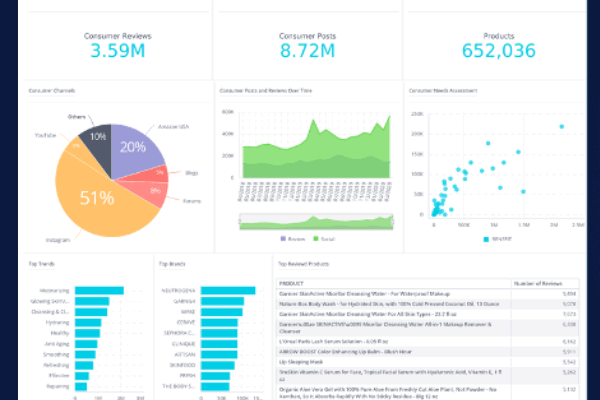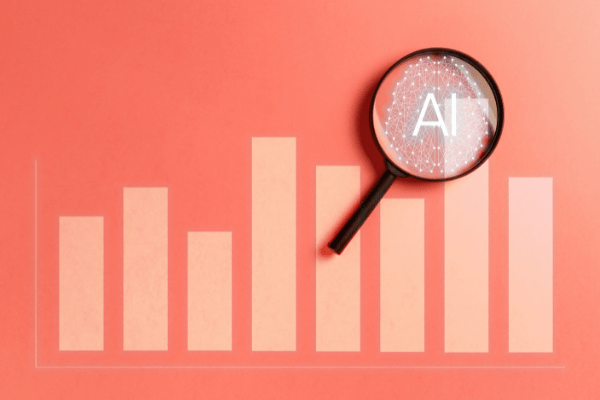In today’s modern world, just about every action taken by an individual, machine, or organization leaves a digital trail in its wake. Mass quantification opens some fascinating opportunities for consumer goods. With the right data (and the right data tools), brands can identify early signals of change in the marketplace and address them accordingly.
By monitoring and mining data from a variety of sources, including everything from user-generated content to research papers and product claims, consumer brands can accelerate innovation while mitigating risk.
Processing data from multiple unconnected sources continuously is too big and complex a process to be handled by humans alone. That’s why leading companies are increasingly turning to Artificial Intelligence (AI) to amplify their data analytics efforts to generate actionable insights.
AI All Along the Actionable Insights Journey
Scaled Collection
Advanced technologies can be used to automate many of the labor-intensive tasks related to collecting and harmonizing large volumes of data. The scope of external data collection described in the webinar would not have been possible in any meaningful way without the help of advanced technologies. With solutions like Skai, customers can collect and combine multiple data sources, including Nielsen, into a single accessible data lake that can be mined for actionable insights.
Automated Classification
It would be awesome if every brand could have an infinite data-entry army that could classify data 24/7 without any errors. Since this solution isn’t feasible, intelligent technologies are needed to augment — if not completely automate — these mass classification tasks.
Auto-classification can be extremely challenging from an engineering perspective. Most off-the-shelf NLP technologies aren’t able to account for the wide spectrum of potential data types.
You can collect all the best data you want from the best sources, but if you don’t have a way to organize it, you end up with a bunch of 0s and 1s. Skai’s customers can access Nielsen’s sales data and filter it through a state-of-the-art NLP system that can categorize all this data with machine efficiency.
Discerning New Information
Content enrichment refers to the ability to derive additional facts from observable information. Huynh illustrated this example with consumer razors: beyond recognizing if a shaving razor is, say, pink or blue, an advanced system can take an additional step and categorize it as a male or female razor.
In a previous technological era, this type of additional classification depended on human intermediation, but can now be handled by intelligent systems. For brands to remain nimble, they need a system with advanced ML capabilities that can be trained to account for new variables on an ongoing basis.
Applying Client Hierarchies
This is the ability of a system to classify data according to industry or even business-specific taxonomies. This is a vital step in allowing brands to answer questions that are relevant to their business. To create value, an analytics system needs to know what’s important to that specific entity.
Scaled Validation
AI can take on the laborious tasks of validating data and detecting and mitigating anomalies. This is important, so the derived insights aren’t thrown off by any isolated outliers.
Previewing Future Markets
With enough historical data, advanced systems can predict how trends will evolve in the quarters — and even years — to come.Using historical data from a variety of sources, advanced analytic systems can build models based on how past trends have evolved. These models can be used to predict a similar evolution of new trends. Predictive insights help brands make informed product decisions based on the foreknowledge of how trends will ascend or decline in the quarters, or even years, to come.
The most accurate predictions are formed by combining multiple sources (e.g., POS information, the voice of the consumer, innovation indicators, competitive trends and other) rather than, say, just historical sales or social listening.
By tapping into multiple external data sources with AI, companies of all sizes can make more informed decisions and achieve improved business outcomes.
————————————–
*This blog post originally appeared on Signals-Analytics.com. Kenshoo acquired Signals-Analytics in December 2020. Read the press release.





